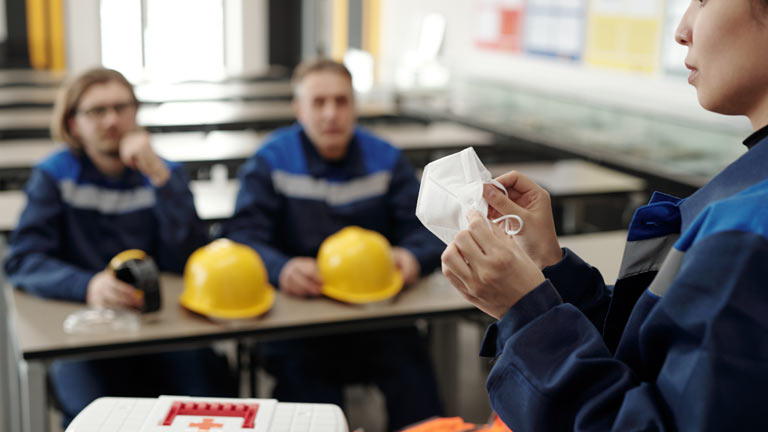
Organizations throughout the world have made workplace safety one of their top objectives. Employers are looking for innovative methods to keep their remote, frontline, and in-office employees safe and healthy, as safe workplaces are also productive workplaces. Safety-related accidents can harm overall productivity, work quality, and employee morale.
Following it seriously can help you avoid accidents at the workplace. Here are some workplace safety rules you can start using right away.
1. From clothing to footwear, dress correctly
Covering your arms and legs, avoiding hanging jewellery or ties, and wearing closed-toe shoes can all help to reduce the risk of common workplace injuries and mishaps. Wear personal protective equipment (PPE) whenever and wherever possible, and examine it for damage before and after use so that it may be fixed or replaced quickly.
2. Maintain a nice and tidy work environment
Clear garbage, pick up wires and cables, and put office items away at the start and end of each shift. Collect whatever resources you’ll need to finish your project. This will prevent you from misplacing items and bending or stretching excessively to reach articles that are lost or out of reach.
3. Stick to the guidelines
Take no shortcuts or undue risks. Hazard and risk assessments are frequently used to design workplace safety rules.
They are meant to reduce the likelihood of an employee being hurt while performing specified responsibilities. Follow all the hazard signs such as understanding the meaning behind a flammable sign and other safety warnings.
4. Report any workplace injuries or events
Always notify your supervisor as soon as an issue occurs so that necessary action may be done. These can involve providing medical attention to an injured employee, correcting the condition that caused the accident, and ensuring regulatory, state, and federal reporting compliance. Report any improper hazard signs you notice.
5. Understand and adhere to emergency protocols
All staff must be trained in and follow emergency protocols to manage situations safely and effectively. This aids emergency workers and safety coordinators in establishing control of a situation and selecting the best course of action.
6. Do not use tools or machinery for which you have not been trained
While certain products and equipment may appear to be self-explanatory, it’s always better to avoid using them until you’ve been properly taught. This is for your protection and that of others around you.
7. Take sufficient pauses
Well-rested employees are more likely to sustain the concentration and situational awareness necessary for workplace safety. Work breaks may be set by contract in some countries; in others, employees must negotiate breaks among themselves.




